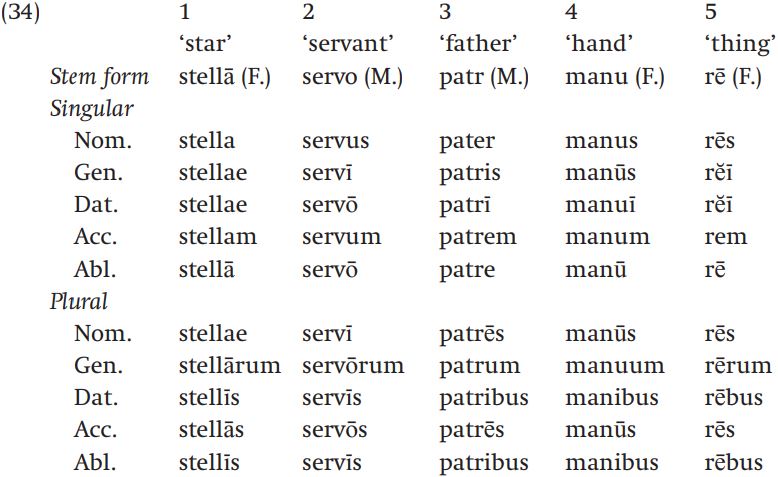
Inflectional classes
 المؤلف:
Rochelle Lieber
المؤلف:
Rochelle Lieber
 المصدر:
Introducing Morphology
المصدر:
Introducing Morphology
 الجزء والصفحة:
104-6
الجزء والصفحة:
104-6
 31-1-2022
31-1-2022
 1394
1394
Inflectional classes
Within a language, not all nouns or verbs may inflect in exactly the same way; all members of a particular category will typically make the same inflectional distinctions, for example, exhibiting case, number, or tense; but the actual forms for particular cases, numbers, or tenses might differ from one group of nouns or verbs to another. These different inflectional subpatterns are called inflectional classes. In Latin, for example, nouns generally belong to one of five inflectional classes that differ to some extent in their inflectional suffixes:3

Nouns that belong to the first inflectional class, traditionally called first declension nouns, are usually feminine, and their stems always end in a long -ā. Second declension nouns are typically masculine or neuter and have stems ending in -o. In the third declension, nouns may be of any gender and stems typically end in a consonant. And so on.
Latin verbs fall into four inflectional classes or conjugations. Each conjugation is characterized by a particular vowel, called the theme vowel, which has no meaning, but is suffixed to the verb root to form a stem.

The person and number endings are attached directly to the root in the first person singular of the first and third conjugations, and otherwise to the stem, which consists of the root plus the theme vowel.
 الاكثر قراءة في Morphology
الاكثر قراءة في Morphology
 اخر الاخبار
اخر الاخبار
اخبار العتبة العباسية المقدسة


